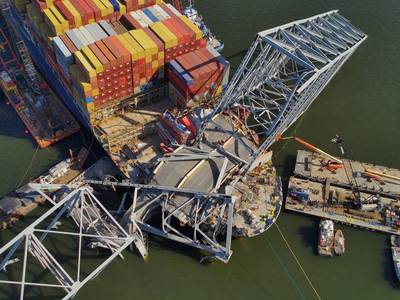US Investigating Potential Risks to Other Bridges Following Baltimore Collapse.
The U.S. Coast Guard is currently conducting an evaluation to determine if other bridges across the country are also at risk following the tragic incident involving a cargo ship colliding with the Francis Scott Key Bridge in Baltimore. The collision resulted in the loss of six lives and caused significant damage to the Patapsco River crossing.
During a U.S. House hearing, Coast Guard Vice Admiral Peter Gautier highlighted the increasing size and complexity of ships, which has placed greater demands on our marine transportation infrastructure. He emphasized the need for comprehensive risk management tools to address the heightened risks associated with these vessels.
In response to the incident, Gautier announced the formation of a nationwide board of inquiry that will assess current risk management measures and propose actions to mitigate the risks of future major incidents. This proactive approach aims to prevent similar tragedies from occurring in the future.
National Transportation Safety Board chair Jennifer Homendy commended the Coast Guard's decision to conduct a review but stressed the importance of states, the federal government, and bridge owners taking immediate action to assess and address any potential risks. She urged them not to delay in conducting thorough risk assessments to ensure the safety of bridges over navigable waters.
Federal Highway Administrator Shailen Bhatt highlighted the need for collaboration between the government and states to enhance protection for vulnerable bridges. He emphasized the importance of updating design standards to accommodate the evolving nature of vessels passing underneath these bridges.
In light of the incident, the FBI has launched a criminal probe, while Maryland is working towards rebuilding the bridge, with an estimated completion date of fall 2028. Controlled explosions were recently carried out in Baltimore to facilitate the removal of a section of the bridge from the cargo ship, allowing salvage crews to clear the wreckage efficiently. The U.S. Army Corps of Engineers is overseeing these operations to ensure the safe and timely removal of the debris.






